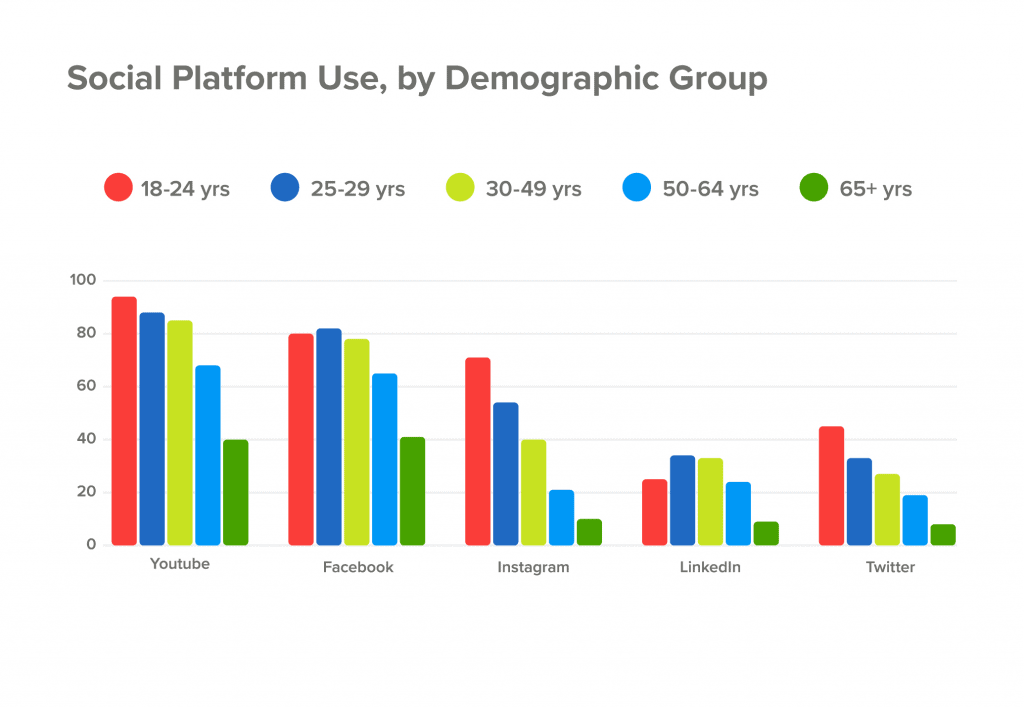What is the purpose of social networking in a corporate field? To make your brand stand out and be one of the most attractive brands?
Well, that could be a quick way of looking at it. But if we delve into the bigger picture, it’s more about making a powerful connection with your online audience. They are the ones you can inspire. It’s about assuring them that you are out there for them. Your brand value their loyalty. They can trust your social content and brand voice.
Building a strong relationship with your audience can be difficult. It may take a lot of time to develop. Your competitors are trying to do the same. You need smart social media tactics to make sure you’re better than your competitors.
Here are some useful social media engagement ideas to embrace your audience. Let’s see how you can and establish a bond with them to make them own your brand.
Understand Your Target Audience
First things first understand your brand and the target audience.
- What demographics suit your brand?
- What type of content do your followers like the most?
- Why are they concerned about your company?
- Which product/service they’re most interested in?
According to this latest report, as of 2020, “More than 4.5 billion people are using the internet now. Meanwhile, social media users have passed the 3.8 billion mark. Around 60% of the entire world’s population is already online. With these numbers, it can be predicted that more than half of the world’s total population will be using social media by the mid of 2020.”

Dissimilar to conventional mediums like TV or radio, social media doesn’t offer a one-size-fits-all solution. In fact, it works relying upon the target.
Choosing the right social media strategy requires a profound understanding of your intended interest group. So, you can drive esteem and make the most grounded sway with your social content.
Given the present condition of the economy, having a defined objective market is a higher priority than at any other time. Nobody can stand to target everybody. Independent ventures can successfully contend with large organizations by targeting a niche market.
Nobody Can Stand to Target Everybody
Numerous businesses state they aim at “anyone interested in my services.” Some state they target entrepreneurs, property holders, or homemakers. These objectives are excessively broad.
Targeting a particular market doesn’t imply that you are excluding individuals who don’t accommodate your criteria. Or maybe, target marketing permits you to focus your marketing dollars and brand message on a particular market that is bound to purchase from you than different markets. This is a significantly more reasonable, productive, and successful approach to arrive at potential customers and create the business.
For instance, a kitchen dresser company could decide to market to mortgage holders between the ages of 35 and 65 with incomes of more than $150,000, in Huntsville, Alabama. To define the market significantly further, the company could decide to target just those interested in kitchen and shower remodeling and traditional styles. This market could be separated into two niches: parents in a hurry and retiring people born after WW2.
With an obviously defined objective crowd, it is a lot simpler to determine where and how to market your business.
Prioritize Social Listening
While most brands know the general importance of social tuning, they don’t precisely get how critical it can be to business strategy.
According to a report, on average, we go through fifty minutes out of each day looking through the newsfeed, posting pictures, commenting, reacting, and sharing our experiences.
Today, 65% of customers utilize social media for customer service. Also, Facebook revealed that more than 1 billion messages are sent from customers to businesses, every year.
This shift implies that the force is immovably in the customer’s hands. Your customers are reaching you on a channel that they like – and they anticipate that you should respond.
Let’s see what happens if you don’t respond? Well, basically – your customers will quit working with you.
An investigation by Gartner found that organizations that don’t respond to social media messages face up to a 15% increase in customer churn.
Moreover, an American Express report found that “83% of shoppers had not finished a buy because of a poor customer service experience on social media.”

Would you be able to manage the cost of your customers’ quitting business with you?
If not, then it’s an excellent opportunity to quit disregarding social media as a client support channel.
When a consumer quits working with you, it’s not because of the product or service you’re selling. This is a direct result of the service you give. If you don’t reply to their messages on social media, at that point, they don’t feel esteemed. It’s now that they choose to shop somewhere else.
An examination by American Express found that when any customer has a poor customer care experience, they share that experience with 17 individuals. In any case, when a client has a poor customer care experience on social media, they share that bad experience with 53 other individuals!
One way to handle this is to use a social media management tool such as Social Champ. It gives you the power to respond to all customer queries on all social platforms from one place.
Track Analytics With Social Champ
Track and analyze social media numbers with Social Champ and adjust your strategies to gain maximum engagement on posts!
Find Relevant Keywords
To understand what keywords are, in simple words, these are the phrases that people search. For example, you are the owner of a Seattle-based gluten-free ice cream shop. To appear more in search results naturally, you have to initially understand somewhat more about your customers. To do as such, you may pose inquiries, for example,
- What sorts of ice cream, pastries, snacks, and so on are individuals scanning for?
- Who is scanning for these terms?
- When are individuals scanning for ice cream, snacks, sweets, and so forth.?
- How are individuals scanning for ice cream?
- What words do they use?
- What inquiries do they pose?
- Are more quests performed on cell phones?
- Why are individuals looking for ice cream?
- What kind of ice creams are they most interested in?
- Are people searching for health-conscious ice cream explicitly or merely hoping to fulfill a sweet tooth?
- Where are potential customers found — locally, nationally, or internationally?
Lastly — here’s the kicker — how might you help give the best content about ice cream to develop a community and satisfy what each one of those individuals is scanning for? Asking these questions is a crucial step that will manage your keyword research and assist you with making better social media engagement ideas.
Create an Engagement Strategy
Of course, even the best keywords and tools matter little if you don’t know what to do. Once you actually find relevant content for your brand, that’s where you can incorporate your social media engagement ideas into proper strategies. That’s why the majority of your time should be spent not listening but responding to the relevant conversations you find on social media.
To streamline that process, create an engagement strategy. You will find all types of comments, from complaints to praises, comparisons, and general industry discussions. Create a rubric that allows you to be strategic about the best response to each type of comment. Also, you need to be really active on social media. Use a social media management tool to assist you in automating your posting schedules.
Evaluate and Adjust
Finally, as is the case with any type of marketing effort, build your social listening strategy in a way that allows for adjustments over time. Not every response will be viewed favorably. Some users may feel they are intruded upon, while others will use it as an opportunity to lash out at your brand. Keep track of your wins and losses over time, to better understand how you can best treat each individual comment.
Also, allow yourself to adjust your keyword strategy over time. If you find that some keywords never seem to gain any traction, eliminate them from your reports. On the other hand, if you keep coming across keywords you’re not tracking yet, add them. That way, you can be sure that when a discussion relevant to your brand occurs on social media, you at least know about it.









